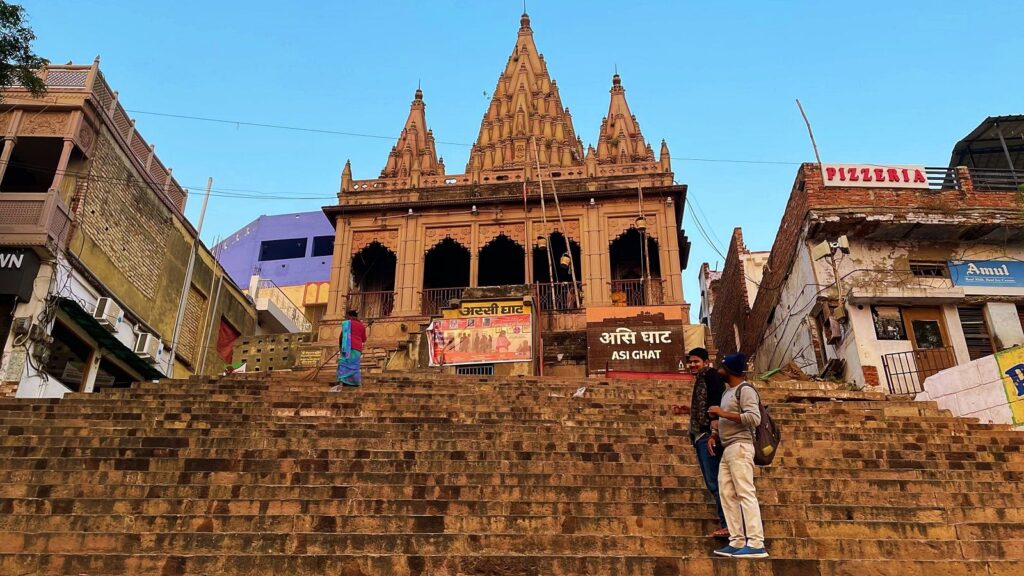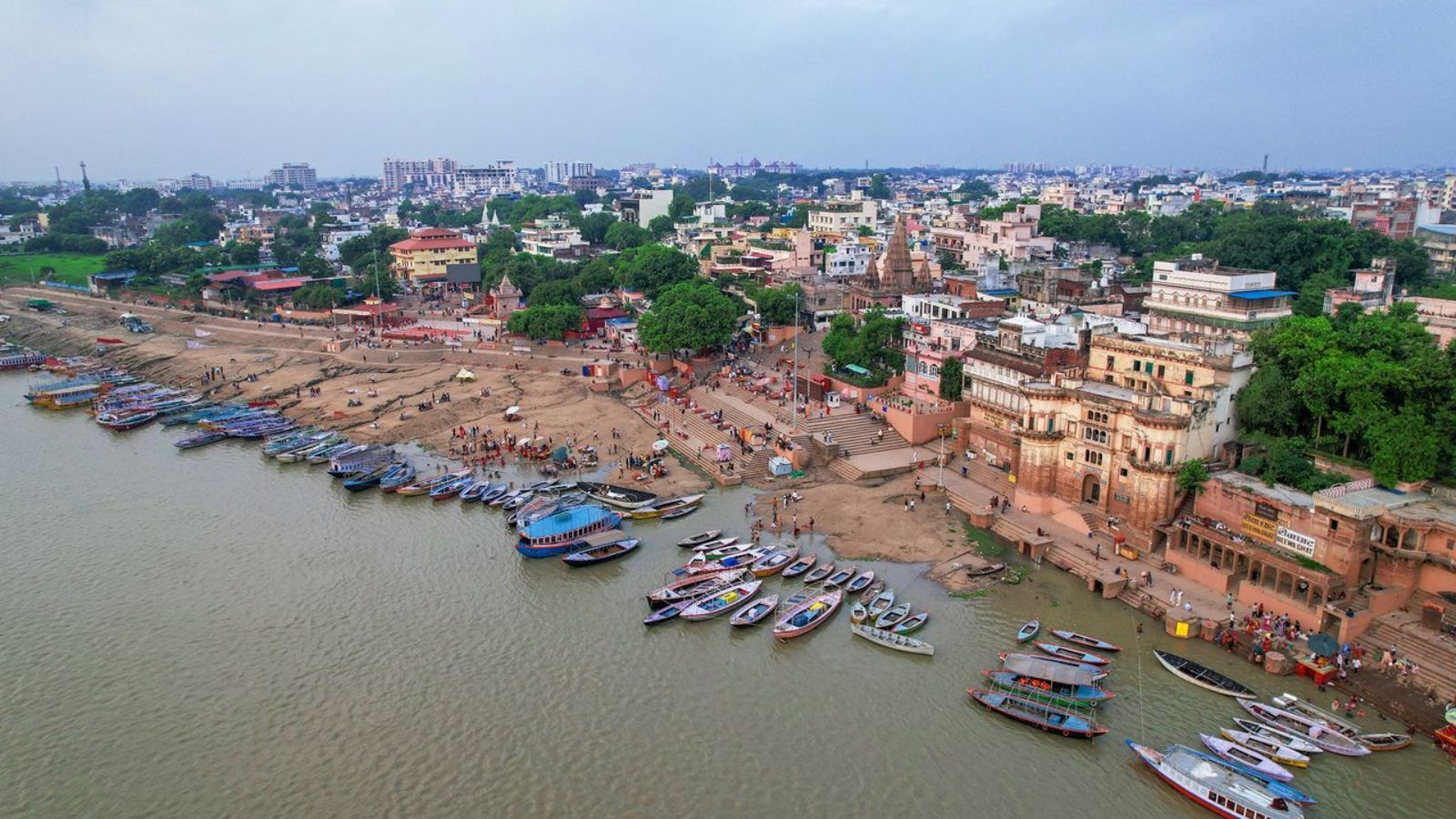Assi Ghat is located at the southern end of Varanasi where the small Assi stream meets the Ganges. An important spiritual and cultural landmark, the ghat derives its name from the Assi River, one of the two tributaries that lend their names to Varanasi, the other being the Varuna River to the north.
According to Hindu mythology, Assi Ghat marks the spot where Goddess Durga, after slaying the demons Shumbha and Nishumbha, hurled her sword. These demons, born from the blood of Raktabija, sought to dominate the heavens, prompting Durga’s fierce intervention to restore cosmic balance. The impact of her sword created a crater, forming a stream that became the Assi River, eventually merging with the Ganges.
Beyond its mythological origins, Assi Ghat holds immense spiritual significance. Ancient texts such as the Kashi Khanda describe it as “Saimbeda Tirtha,” where a single dip in the Ganges offers the merit of visiting all Hindu pilgrimage sites. The ghat is home to a Shiva lingam beneath a peepal tree and the Assi Sangameshwar lingam in a marble temple, both of which draw devotees for worship.

Assi Ghat is also a living cultural stage. Before sunrise, the Subah-e-Banaras program brings Vedic recitations, music, yoga, and aarti to the riverfront, inviting residents and pilgrims to greet the day in prayer and movement. Legend holds that Tulsidas composed portions of the Ramcharitmanas here. The ghat’s proximity to Banaras Hindu University (1.5 km) further makes it a hub for students and tourists alike.
What to see within 500 meters:
- Tulsi Ghat (north): Associated with the poet Tulsidas and an integral part of the southern ghats’ history.
- Ganga Mahal Ghat and Rewa Ghat: Smaller landings beside Assi that add to the continuity of the riverfront.
- Lolark Kund (400 meters): An ancient stepped tank dedicated to Surya, where a ritual dip is believed to grant health, fertility, and longevity.
- Rani Laxmibai Janmasthali (250 meters): The birthplace of Rani Laxmibai of Jhansi, who was given the name Manikarnika at birth.



